Directors' Blog
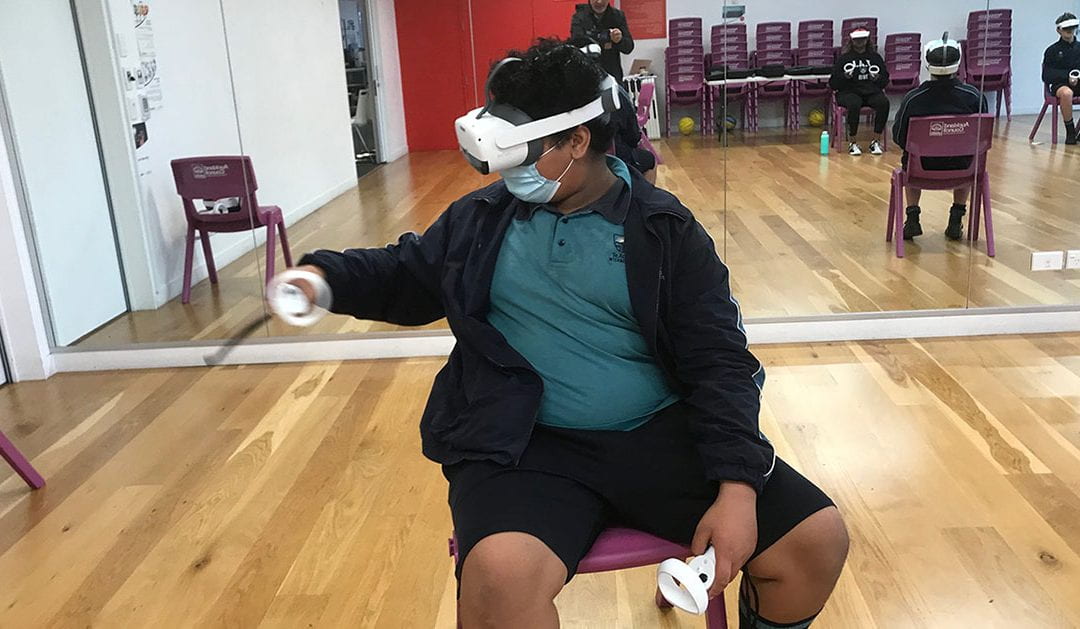
Mobility, curiosity and creativity at science and engineering expo
15 September 2022
Students from Te Atatū Intermediate experience a virtual walk through of the Faculty of Engineering at the University of Auckland.
Over three days in September, students at Te Atatū Intermediate experienced science and engineering at an expo featuring virtual reality (VR), robot spheres, and popcorn and candy floss machines.
This expo was designed to foster mobility, curiosity and creativity. These are the three themes that Tony Nemaia’s masters research with Te Pūnaha Matatini has identified as being important for Māori and Pasifika success in science, technology, engineering and maths (STEM).
The expo was a collaboration between Tony and Ameera Danford from the South Pacific Indigenous Engineering Students (SPIES) network from the Faculty of Engineering at the University of Auckland. It was run at Te Atatū Community Centre and Te Atatū Intermediate by students from SPIES and Te Atatū Intermediate.
The expo started as a koha back to Te Atatū Intermediate for their partnership in the ‘Tales of Diversity’ project that Tony’s masters research is part of. It quickly turned into a real-world example of creating narratives about science and engineering.
One of the central activities was a VR walkthrough to demystify the University of Auckland and its STEM environment. This was a unique and incredibly engaging experience for people at the expo.
A teacher aide commented that it was great to see Māori and Pacific students from Te Atatū Intermediate featured in the VR footage. The VR experience piqued the interest of Māori and Pacific students to visit the University of Auckland.
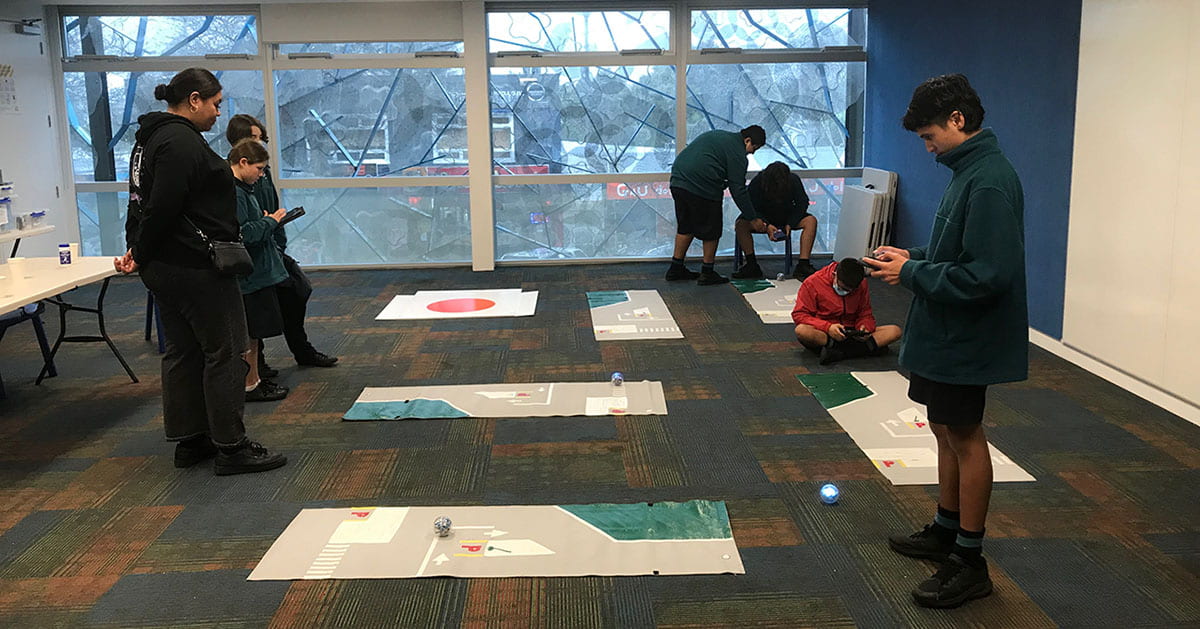
Students from Te Atatū Intermediate have a tutu with robot spheres.
Mobility, curiosity and flexibility were on full display throughout the expo. Tony observed two Māori students mesmerised by the wonders of a 3D printer. Two days later he discussed the possibilities of having a tutu with a 3D printer:
Tony: Would you like to have a go with a 3D printer?
Student (smiling): Yes (emphatically)
Tony: Would you like to design something and print it?
Student (still smiling): Yes (still emphatically)
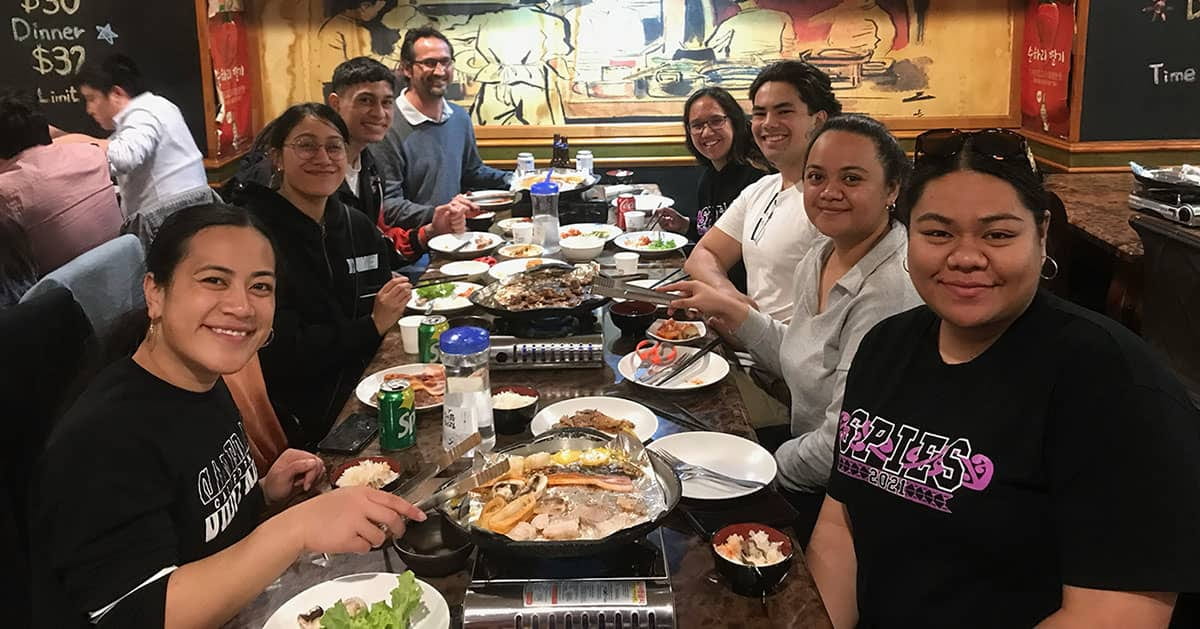
Tony Nemaia (taking photo) and Mike O’Sullivan (at back) from the Tales of Diversity project team take the SPIES team out to dinner to say ngā mihi for the expo.
It was an exhausting, but extremely satisfying event. Ngā mihi nui to Ameera and our SPIES contributors: Dominic Swann, Audrey Faleata, Fatai Lotulelei, Erene Punefu, Sophiara Evile and Ryan Saena.
The team would like to acknowledge the important contributions of Te Ahi Hangarau Technology Hub and SkillsVR. Te Ahi Hangarau Technology Hub enabled the concept of VR to flourish with Tony and the Te Atatū Intermediate students and SkillsVR took the VR experience to the next level for the expo.
What students had to say about the expo in Te Atatu Intermediate’s newsletter
Throughout the past three days, the students of Te Atatū Intermediate have experienced VR, robot spheres, and popcorn and candy floss machines. While participating in each activity, students got to learn about science and engineering.
In the VR, students got to experience the University of Auckland and see a group of kids from Te Atatū Intermediate participating. It was very weird but cool seeing ourselves in the VR and hearing everyone saying “oh I see Matua Tony”. That was very funny hearing all of them saying that.
Ameera from SPIES taught every group about how the fancy popcorn and cotton candy machine works.
We also got to learn about robot spheres and how to use them and what they do. For the robots you could challenge yourself with the coding and programming part, or you could just have fun and play around with them. Some groups of students from TAI had ideas of having races with the robots, and that was very interesting because we haven’t had anyone do that before and that was very exciting that they thought of that.
We all really loved the expo along with the activities, and learning about them was really exciting.
Written by Olivia, Sophia and Wahi
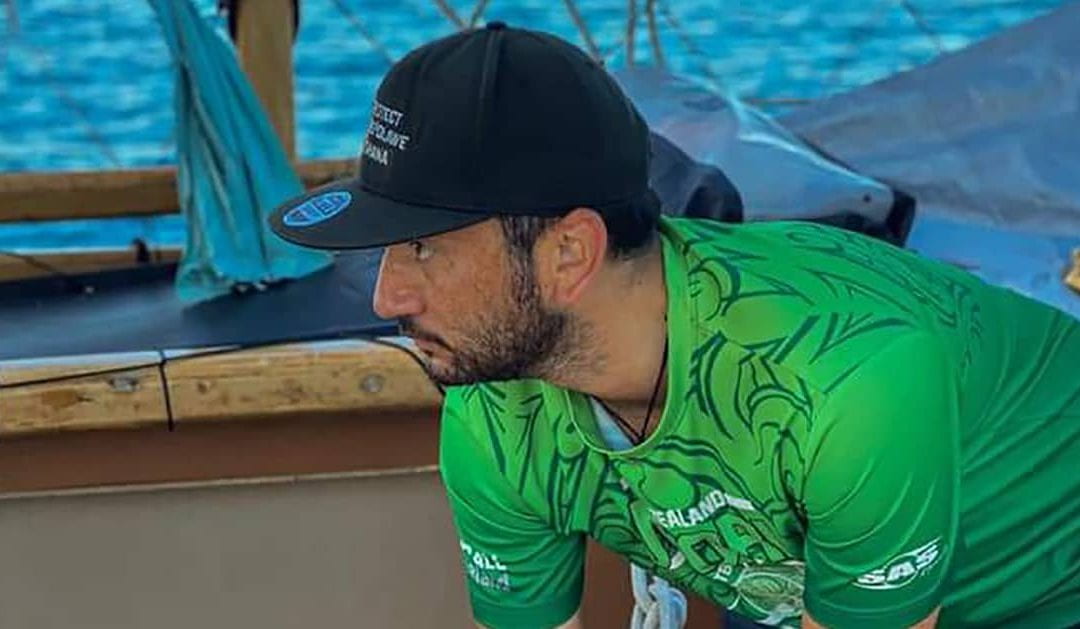
How maramataka can guide kaitiakitanga of awa and moana
Te Kahuratai Painting on the hoe of Ngahiraka Mai Tawhiti, sailing through Te Moana o Pikopiko-i-whiti.
19 August 2022
Te Kahuratai Painting (Ngāti Manu, Te Popoto, Ngāpuhi) is exploring how maramataka can guide Ngāti Manu kaitiakitanga of awa and moana.
For his Master of Marine Conservation project, Te Kahuratai Painting explored the interconnection between Ngāti Manu kaitiakitanga and maramataka, and how research practice in marine conservation can be guided by maramataka and grounded in whakapapa.
Maramataka is the Māori lunar-stellar-ecological calendar that uses the phases of the moon, the rising of stars in the morning and the timing of ecological phenomena to understand and relate to the environment around us in Aotearoa New Zealand. The revitalisation of maramataka is thriving in Te Ao Māori at the moment, led by maramataka experts like Rereata Makiha, Rangi Mātāmua and Rikki Solomon.
Te Kahuratai was supervised by Dr Dan Hikuroa and Dr Tara McAllister, both principal investigators at Te Pūnaha Matatini, and his mahi was funded by a masters scholarship from Te Pūnaha Matatini.
“It was really me exploring two things,” says Te Kahuratai, “my love of maramataka, and of my hapū Ngāti Manu.”
“Our hapū, being in the valley, is well connected to our forests and our river, but the moana was a gap for me, so I thought I would study marine conservation to fill that gap to help to reconstruct maramataka with our hapū.”
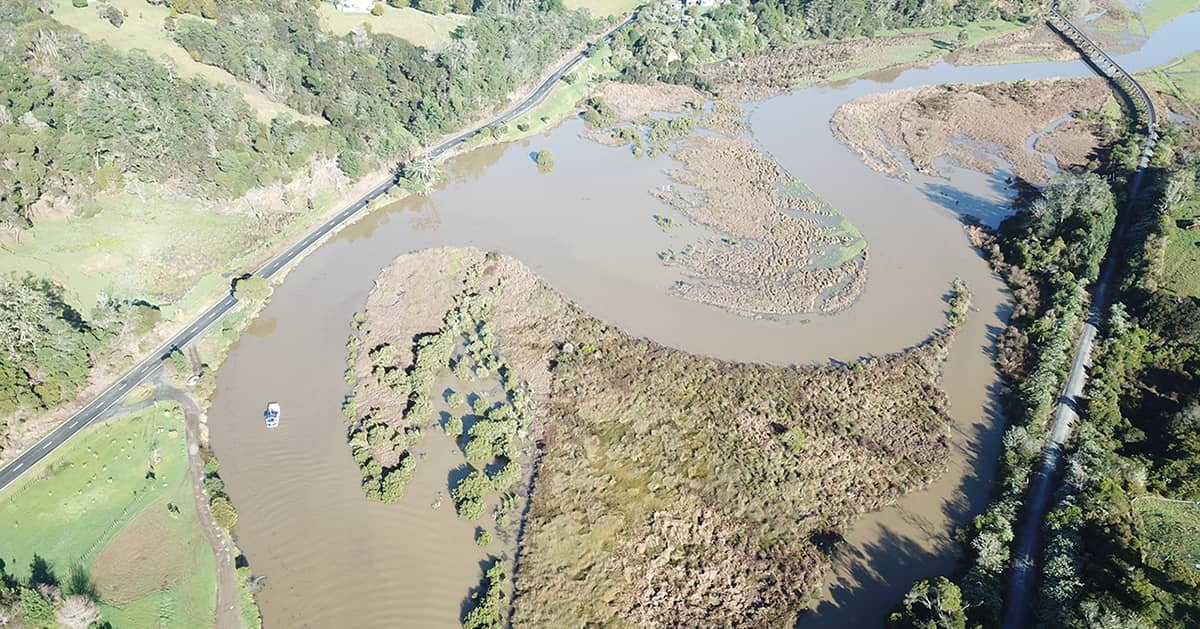
A group of Ngāti Manu and manuhiri on Te Awa Tapu o Taumarere.
The maramataka system of knowledge includes tātai arorangi Māori astronomy, knowledge of the lunar phases, knowledge of the tides and weather patterns, as well as the timing of the flowering of different trees or the migration of different birds, or the running of fish up and down a river. “That can lead to a very specific and quite deep knowledge of our environment,” says Te Kahuratai.
“Kaitiakitanga is often just seen as conservation by Māori, but our understanding of kaitiakitanga is so much deeper than that.”
The ongoing Covid-19 pandemic prevented Te Kahuratai from holding a planned week-long wānanga at his marae, talking about and looking at stars, learning about the lunar-stellar-ecological calendar, and watching specific marine phenomena.
“What happened instead was a really theoretical exploration of how other people have recreated their own maramataka, because there’s more than 500 across the country,” says Te Kahuratai. “It’s really specific – a coastal maramataka versus an inland maramataka would be different, from one coast to the other could be different, one side of the mountain to the other side of the mountain could be different.”
In his thesis, Te Kahuratai linked existing maramataka for the Ngāti Manu rohe of Karetu and Taumarere in the Bay of Islands with the teachings of maramataka experts. He conceptualised pūtaiao as Kaupapa Māori science, developed a framework grounded in kaitiakitanga and maramataka for marine conservation, and asked how we can use knowledge like maramataka to change that way that Kaupapa Māori research is conducted.
“If you’re researching it, you should be practicing it,” says Te Kahuratai.
Tara says that “it was a privilege to work with Te Kahuratai on his master’s thesis. In Te Ao Māori we often talk about tuākana/teina relations, and in this case Te Kahuratai was the tuākana and I was the teina, and I learnt so much from engaging with his work.”
Te Kahuratai was gifted maramataka from Taumarere by Rereata Makiha.
“I worked with three different manuscripts,” explains Te Kahuratai. “One was written in the early 1900s. One was based on an early manuscript but was reprinted for schools back in the 1980s, and the third was a really old one from before the Māori written system was formalised, and it was based on symbols.”
“The level of detail in them is crazy. They name the specific nights that you should expect the bulk of īnanga whitebait to run, specific nights for planting vegetables that grow in the ground, specific nights for planting vegetables that grow above the ground, specific nights for planting vegetables that like a lot of water, or good times to use particular methods in specific places to do certain types of fishing.”
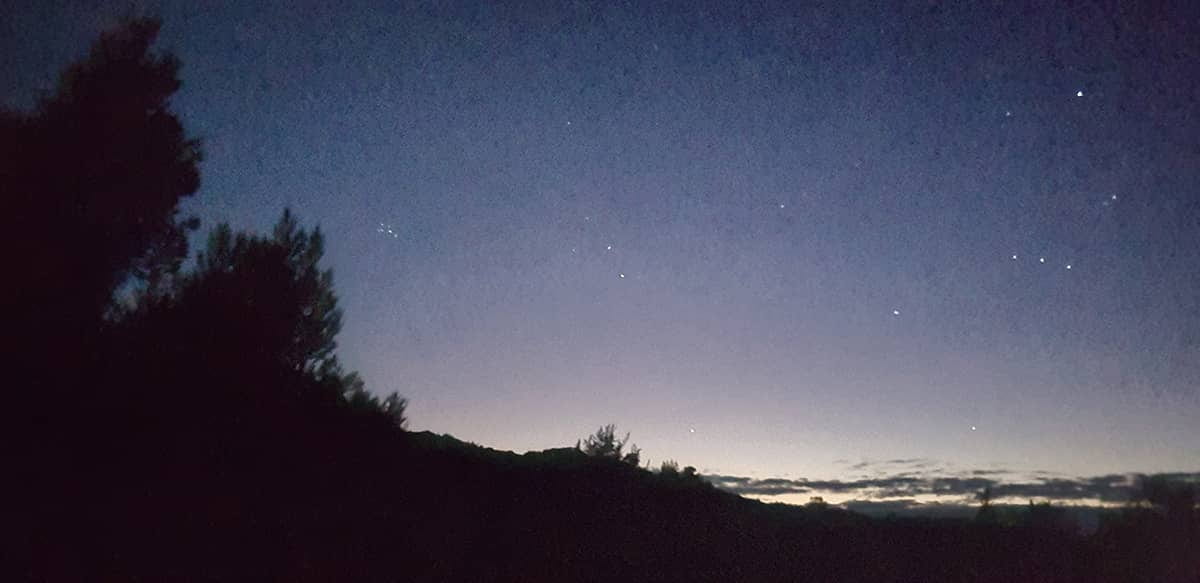
Matariki from Puketohunoa Pā.
Te Kahuratai is planning to explore these maramataka as a PhD project, to see if the changing climate affects the guidance from ngā wā ō mua many decades ago, and investigate how they could be updated for the more unpredictable contemporary environmental conditions caused by a warming planet.
Dan is excited about this research because of “the scope, the privileging of deep knowledge of a specific place, tested through time, and its application in contemporary times, and how it can inform conservation practices.”
Te Kahuratai’s thesis concludes with a framework that will guide this PhD research, based on the whakataukī “Tuia ki te rangi, tuia ki te whenua, tuia ki te moana, tuia ki te here tangata, ka rongo te po, ka rongo te ao,” which means: “weave towards the sky, towards the land, towards the waters, and weave to the binding thread of people, and then you will come to understand the divisions of night and day”.
For Tara, “Te Kahuratai’s thesis is a koha, especially for Ngāti Manu, filled with insight and provocations to rethink the way in which we do our research.”
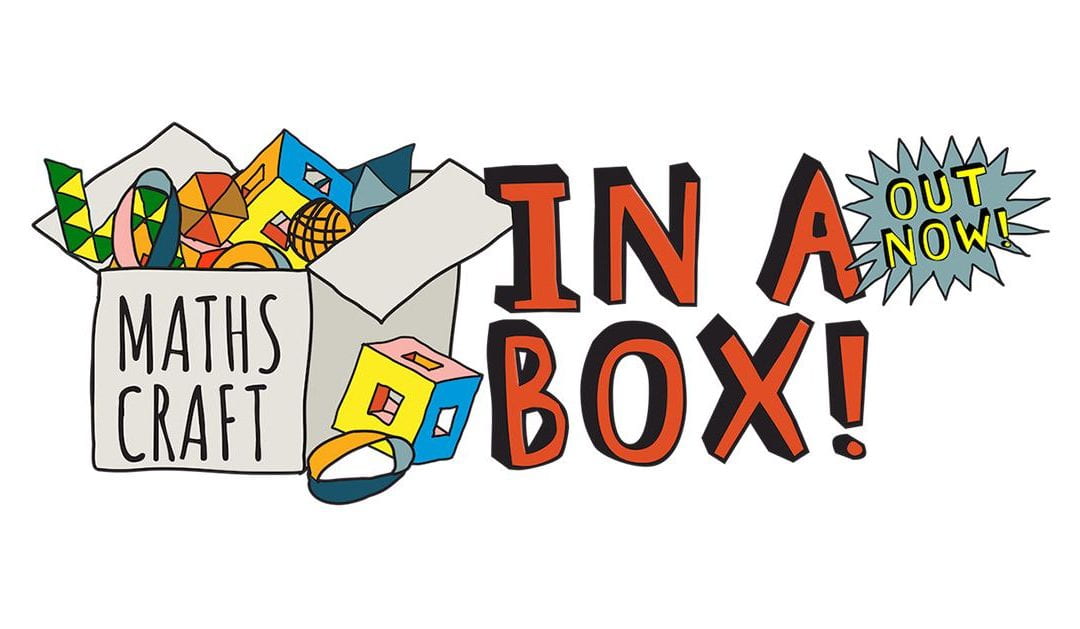
Maths Craft in a Box is shipping now
17 August 2022
Maths teachers in Aotearoa New Zealand can now order Maths Craft in a Box, shipped free to your school.
Maths Craft in a Box is a free and entirely self-contained classroom resource, dedicated to exploring the wondrous world of mathematics through the engaging medium of craft.
The first edition of Maths Craft in a Box is dedicated to exploring the fascinating world of fractals in the classroom, including enough craft materials to build a large fractal sculpture, packs of student Zines (workbooks) providing a beautifully illustrated introduction to the mathematics of fractals, and custom-made online instructional videos. The Box includes enough content to easily fill several lessons, is ideal for years 7-13, and can be entirely student-led.
The Maths Craft in a Box team is made up of Te Pūnaha Matatini investigators and Maths Craft New Zealand founders Dr Jeanette McLeod and Dr Phil Wilson, Te Pūnaha Matatini investigator and designer Jo Bailey, and educational researcher Dr David Pomeroy.
They put together Maths Craft in a Box to help teachers anywhere in Aotearoa New Zealand bring mathematical thinking into the classroom at a crucial age for tamariki. This creative and free resource brings mathematics to life as a subject. Students who already love maths will find something new and enriching in the Box, and a pilot project in Ōtautahi Christchurch showed that most children who don’t like maths felt differently after engaging with the Box.
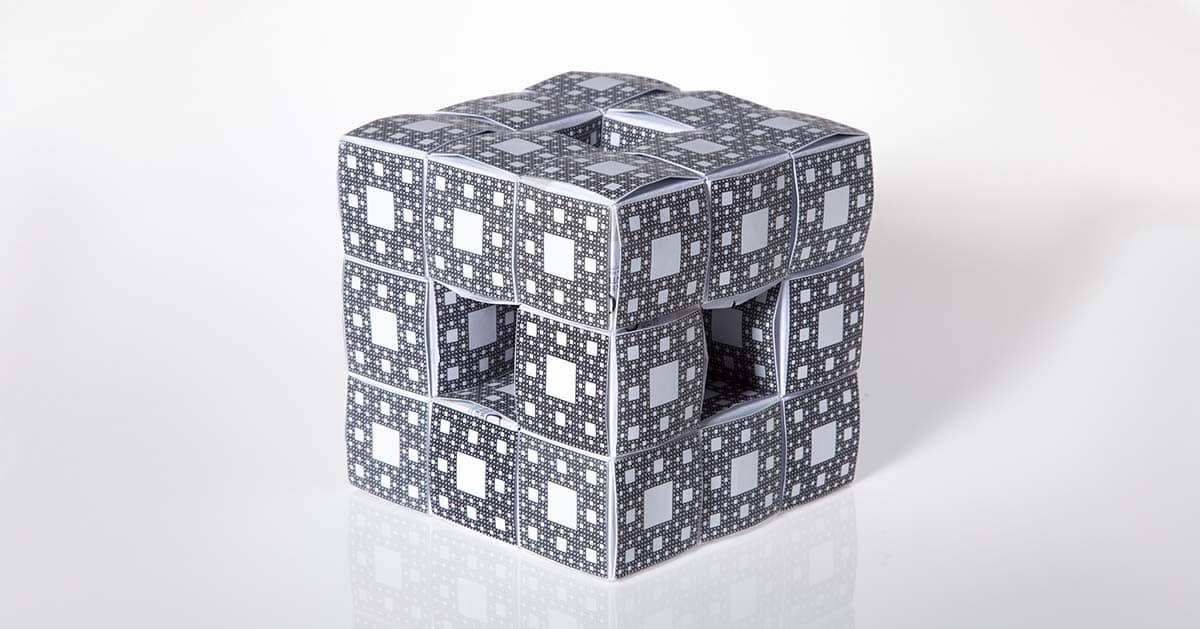
One of the 20 Menger sponges you can build with Maths Craft in a Box.
Maths Craft also hope to change some long-held misconceptions about mathematics. While elsewhere in the world maths is seen as a gateway subject for a wide variety of important careers, in Aotearoa it is still common for children to be told that if they are good at maths they should become engineers or teachers.
We do need more engineers and more teachers, but we also need more physicists, statisticians, data scientists, computer scientists, programmers, mathematical modellers, actuaries, climate modellers, and many more besides, all of which rely on advanced mathematics.
In the last few years we have seen the crucial role played by mathematicians in the government’s response to Covid-19. We need more mathematically-trained people in Aotearoa as we respond to future threats of disease, climate change, and cyber security.
If you are a maths teacher in Aotearoa New Zealand and are ready to use Maths Craft in a Box in your classroom, you can place your order today.
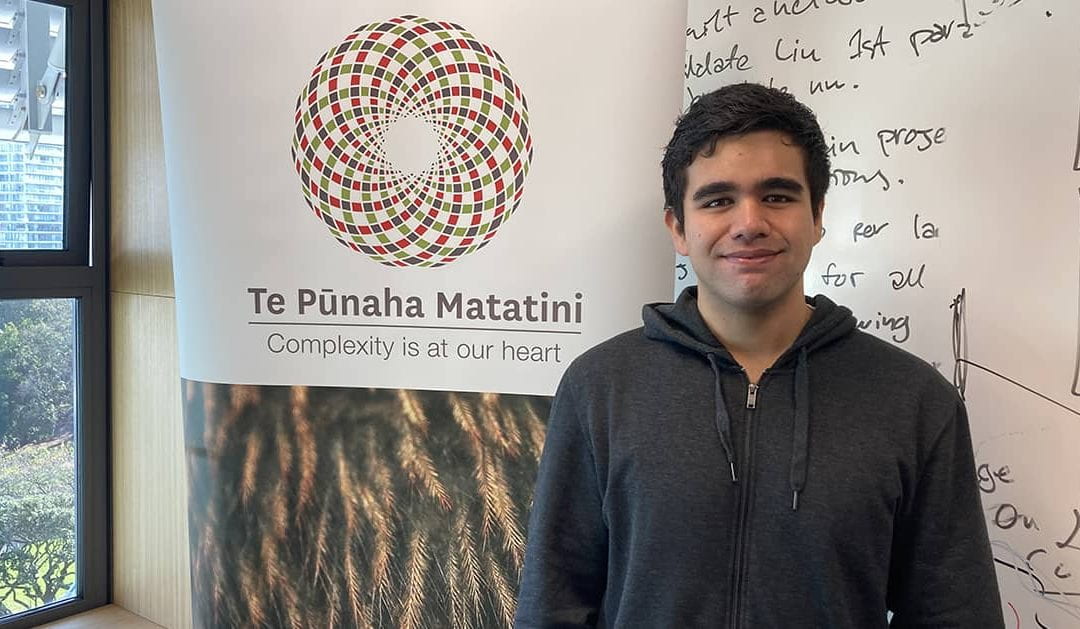
A summer of machine learning and data sovereignty
1 July 2022
Dion Wharerau spent the summer as an intern with Te Hiku Media, working to improve their automatic speech recognition model for te reo Māori.
Dion Wharerau has enjoyed maths since his first years at Kaikohe West School. His teachers supported him by sending him to older classes during maths time, and says that really reinforced his enjoyment of it.
These days he is studying for a Bachelor of Science in Computer Science at the University of Auckland. He says that programming is the perfect combination of problem solving and creativity for him. Dion continues to enjoy studying maths at university, and is disappointed that he won’t be able to fit in all the courses that he is interested in before he graduates.
Last year Dion heard about a summer internship with Te Hiku Media and Te Pūnaha Matatini through the Computer Science Tuākana programme.
Te Pūnaha Matatini is a Centre of Research Excellence in complex systems, hosted by the University of Auckland. Te Hiku is a charitable media organisation, collectively belonging to the Far North iwi of Ngāti Kuri, Te Aupouri, Ngai Takoto, Te Rārawa and Ngāti Kahu.
Māori language revitalisation is a core focus of Te Hiku, and they are working to enable a sovereign digital future for Indigenous languages. One of their key projects is the Papa Reo natural language processing platform.
“I saw the internship and applied for it straight away! I remember going through Te Pūnaha Matatini’s website and really liking everything I read – about problem solving and complexity.”
“I liked the slogan: Complexity is at our heart.”
Dion spent the summer of 2021-2022 working with the Papa Reo team to apply DeepSpeech augmentations to their automatic speech recognition model for te reo Māori.
“My project was to increase the robustness of the machine learning model,” says Dion. “I worked with a lot of amazing people, and I learned a lot along the way. I made lots of mistakes, and I worked with some really amazing software.”
“A big mistake that I corrected early on was asking for help a lot more often. Everyone at Te Hiku was incredibly helpful! Once I started asking for help, things got sorted immediately.”
Central to the natural language processing work that Te Hiku does is a staunch belief that each community must maintain control and sovereignty of their data.
Learning about data sovereignty was new territory for Dion. “Data sovereignty was something I’d never thought about before, because I’d never really worked in a real-life situation that involved other people’s data.”
“I’m incredibly grateful to Te Hiku and Te Pūnaha Matatini, because my internship was a great experience.”
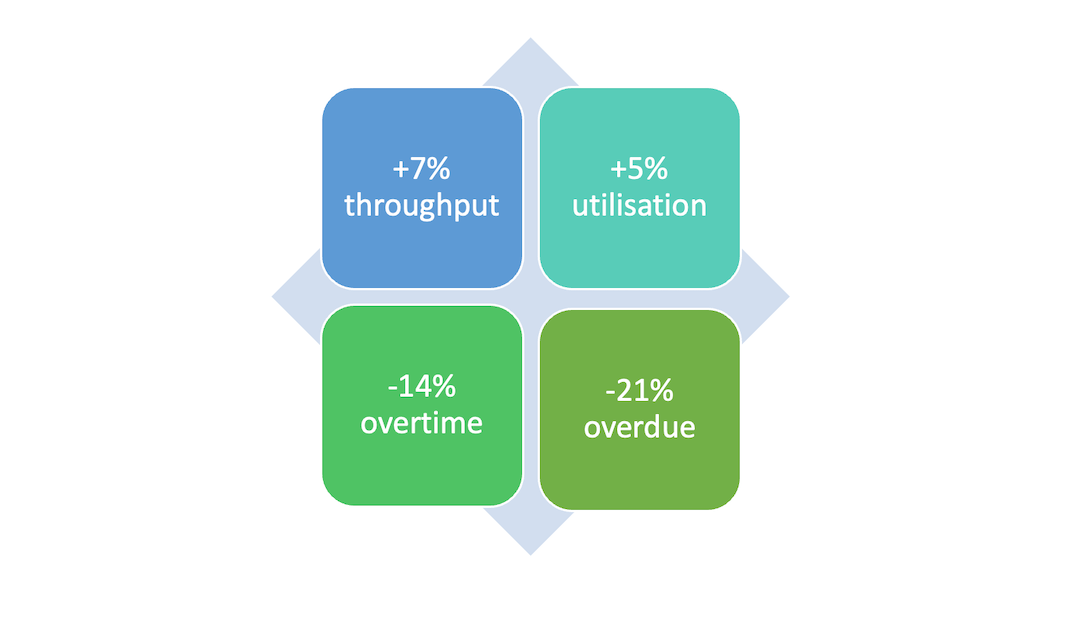
Efficient and fair surgical schedules with algorithms
1 April 2022
Dr Thomas Adams is working to improve surgical scheduling using algorithms and individualised surgical duration predictions.
Increased throughput, increased utilisation, decreased overtime, fewer overdue operations, and less staff time required for planning: all of these can be achieved with improved surgery scheduling. By using accurate predictions of operation durations, giving priority to patients that are urgent or have been waiting a long time, and balancing the trade-off between increasing utilisation and surgical sessions running overtime, computer algorithms can be used to inform surgical schedules that are efficient and fair.
I have been awarded a postdoctoral fellowship from Precision Driven Health and the Health Research Council to develop improved surgical scheduling algorithms using individualised surgical duration predictions. I am currently working on this project alongside Te Pūnaha Matatini Principal Investigators Associate Professor Cameron Walker and Dr Michael O’Sullivan.
We have combined a novel algorithm for predicting how long operations take with an advanced scheduling algorithm. The novel prediction algorithm uses the Systemized Nomenclature of Medicine (SNOMED) medical terminology database to find links between types of procedures, which enables us to make better predictions for less frequent procedures, as similarities can be found to more common procedures.
These improved predictions are fed into our scheduling algorithm alongside the operations that need to be performed and the sessions that they can be performed in. The scheduling algorithm finds the best way of allocating the operations to the sessions so that as many operations are performed as possible, while making sure that no patients have to wait too long for their operation and no sessions are scheduled that are too likely to run overtime.
Initial testing of our algorithm-supported approach shows improvement in all key metrics: a 7% increase in throughput, a 5% increase in utilisation, a 14% reduction in overtime and a 21% reduction in operations being overdue.
The two pictures below show an actual schedule on the left, and a schedule created with our algorithm on the right. Both schedules started at the same point at the beginning of the year, and the pictures show the results after five months. The optimised schedule has fitted in more operations, allowing more of the waiting list to be cleared, and resulting in fewer overdue operations remaining. The surgical sessions are also better utilised with no overruns or underutilised sessions.
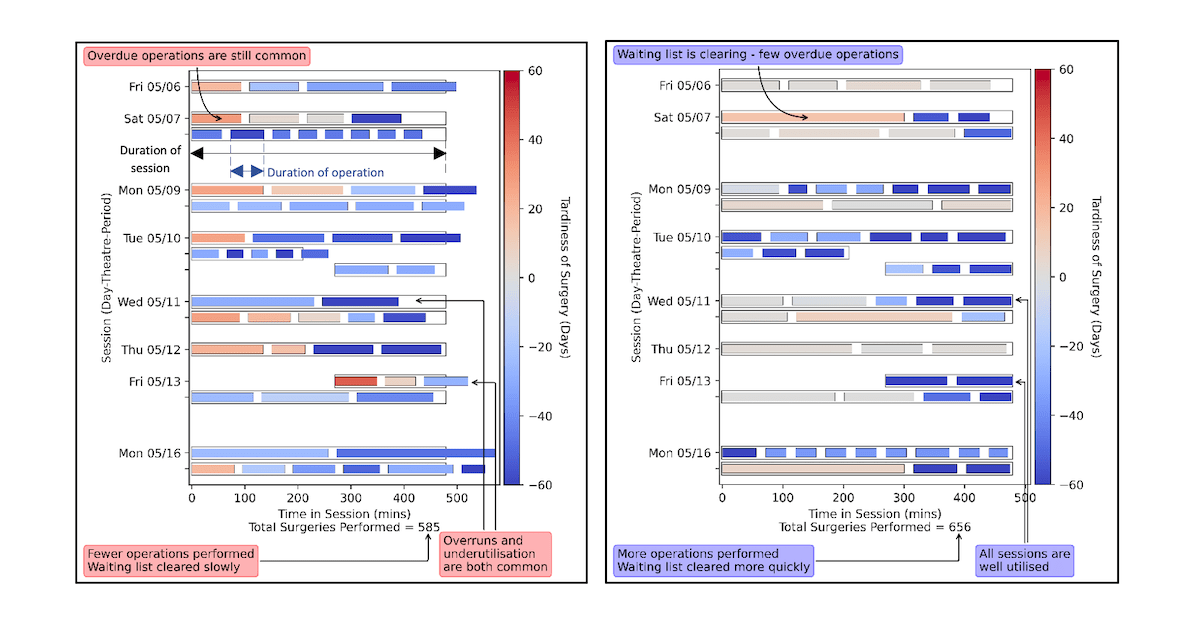
The next step in our research is to better understand how operating rooms are managed and surgeries are currently scheduled in Aotearoa New Zealand, so that we can refine our algorithms to be as relevant and easy to use as possible. In particular we are interested in how operating room time is allocated to specialties or surgeons, how far in advance operations are scheduled, who decides which operations are performed on each day, and how emergency operations are accommodated.
We are also working alongside scOPe solutions to organise a pilot of the scheduling software, and have collaborated with Orion Health to make a simplified version of the scheduling algorithm available online via the New Zealand Algorithm Hub.
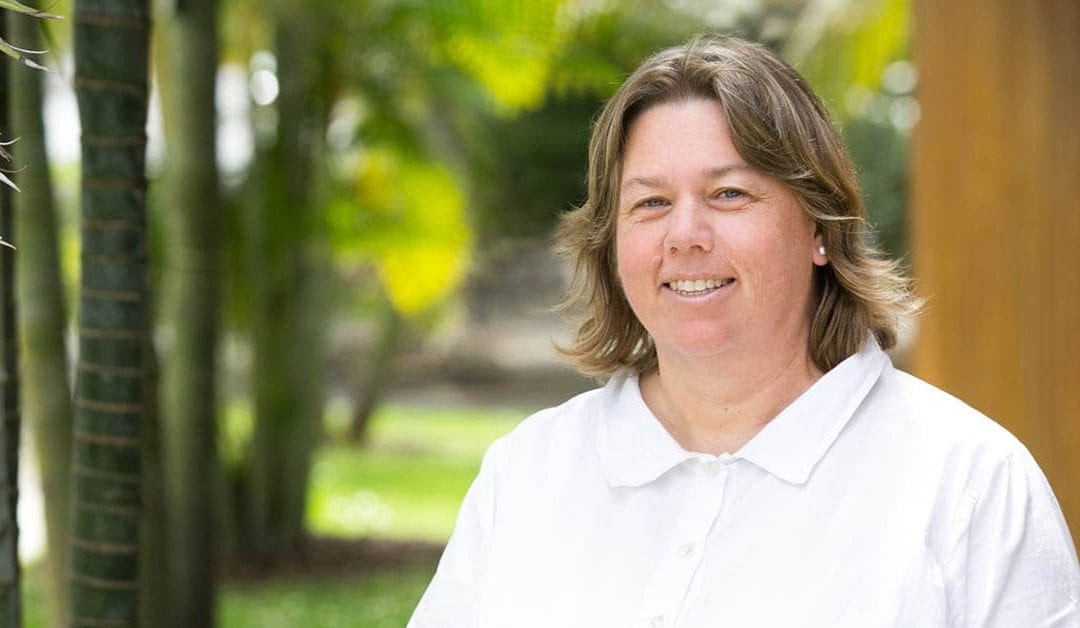
Innovative research at the intersection of science and mātauranga
17 November 2021
Associate Professor Priscilla Wehi has been awarded the 2021 Hill Tinsley Medal from the New Zealand Association of Scientists (NZAS).
Cilla is the Director of Te Pūnaha Matatini and a leading figure in conservation biology and ethnobiology in Aotearoa New Zealand. The Hill Tinsley Medal recognises her innovative research at the intersection of science and mātauranga.
The NZAS Medals for 2021 were presented on 15 November 2021, following the Association’s online conference and AGM. The Hill Tinsley Medal is awarded for outstanding fundamental or applied research in the physical, natural or social sciences published by a scientist or scientists within 15 years of their PhD.
Cilla engages with some of the most challenging conservation issues that confront humanity globally, focusing on the links between culture, biodiversity, and ecological restoration.
Her research is cross-disciplinary and incorporates humanities and western science, working with both quantitative and qualitative approaches in learning how the world works. She has also been active in finding non-traditional ways of communicating her research, collaborating in media from comics to film.
“When I look at the past recipients of the Hill Tinsley Meal, I see scientists who have created change in both our understanding of the world, and the tools we use to examine problems,” says Cilla.
“It is a huge privilege to be part of this group. However I also want to acknowledge the immense contribution of all researchers, and the collective body of work that we contribute to, which enables us to solve problems. Kua rarangatahi tātou he whariki mō ngā rā a mua.”
Cilla’s research interests are focused on human-nature relationships, including biocultural diversity and Indigenous environmental relationships. She also works on introduced species that challenge native ecosystems, insect ecology and behaviour, and interdisciplinary Antarctic research.
Professor Troy Baisden said that “From my perspective as the NZAS President presenting the award, and knowing Cilla as a Te Pūnaha Matatini investigator, the citation and her response on accepting the award sum up how she has showed daring in crossing disciplinary boundaries to deliver major insights through excellent research, while always thinking of people along the way.”
“Her work and the citations speaks for themselves, yet she wanted to communicate that a significant amount of her work was carried out on precarious contracts. She had the daring to succeed while taking risks, but the risks and challenges facing post-docs interrupted by the pandemic is huge – she asks how we can do more to help today’s emerging researchers.”
Cilla is passionate about inclusivity and diversity in science and has undertaken extensive work with Māori communities to incorporate their needs and aspirations. Her natural curiosity and open approach to multiple ways of knowing make her a role model and natural leader for many emerging scholars who seek to work in a cross-cultural way.
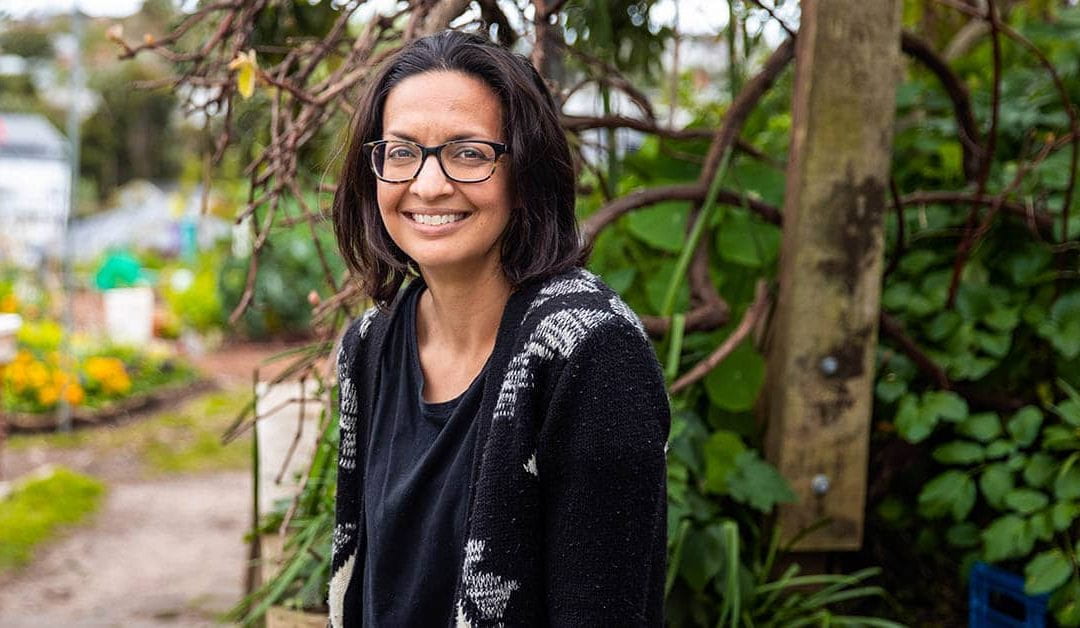
What’s in our soil, and what it means for us
Te Pūnaha Matatini supports the work of Soilsafe Aotearoa to explore community soil values and map lead and other metals in home garden soils.
Dr Emma Sharp has been interested in home garden soils since she came across a newspaper article about blood lead levels in domestic chickens in Sydney.
Emma is a geographer and a Principal Investigator at Te Pūnaha Matatini. When her environmental chemist colleague Dr Melanie Kah approached her about starting up a local version of an Australian project testing domestic soil for metal contaminants, Emma raced to her office to grab the newspaper clipping that had been pinned there for several years.
“I ran and got the newspaper article and waved it in front of Melanie and said ‘I’ve been interested in this for a really long time!’” says Emma. “It turned out that it was the same research unit, and I said ‘I’ve got all kinds of ideas for this. If I’m involved, we can make this true to Aotearoa – let’s look at it from all angles.’”
“And so Soilsafe Aotearoa was born. It’s a project of diverse soil values. We’re thinking about community values, public education, Indigenous perspectives, artistic interpretations, and things that are beyond economics – which is how soil is usually considered in Aotearoa and around the world.”
Emma recently received the 2021 Research Communication Award from the School of Environment at the University of Auckland for her work with Soilsafe. She also took home the Early Career Research Award, and says that her association with Te Pūnaha Matatini and engagement work with Soilsafe were cited as reasons for this award.
“The way that I gained my engagement skills in the first place is being associated with things like Te Pūnaha Matatini Engagement Incubators and the wide variety of different people that we engage with at Te Pūnaha Matatini.”
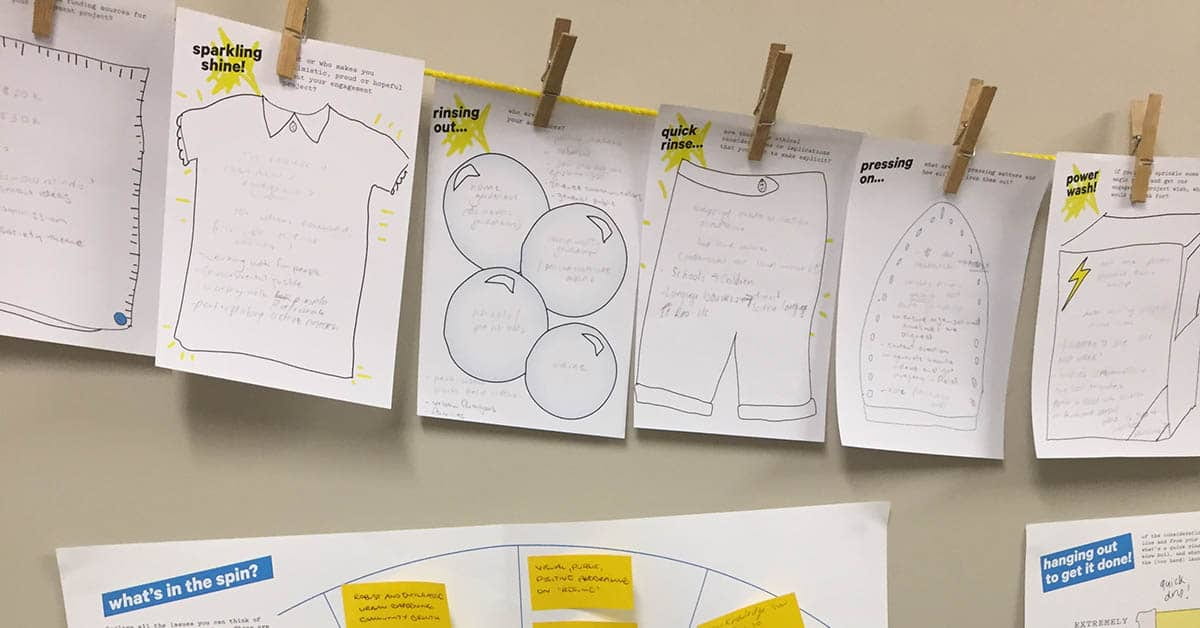
Emma made use of Te Pūnaha Matatini’s Engagement Laundromat to ensure that engagement was central to Soilsafe from the very start.
A mainstay of Soilsafe is an ongoing testing programme, in which members of the public send in samples of soil from key places in their gardens to be tested for a suite of eight heavy metals. The results are returned with guidance about how people can modify the ways they interact with soil to reduce exposure to any contaminants that might have been detected.
Soilsafe’s lab at GNS Dunedin was inundated with soil samples after the project was mentioned on TVNZ’s Sunday show, and they have now processed over 2,000 samples.
Emma and Melanie are interested in patterns of soil contamination in locations close to main roads, due to the legacies of leaded petrol. They are also exploring a sociodemographic correlation to less well maintained houses that have peeling lead paint.
Other data sources include questionnaires and interviews about people’s values regarding gardens and gardening in Aotearoa over the COVID-19 lockdown period in early 2020.
“We get the sense that people got into their gardens a lot more during lockdown,” says Emma. “Gardens were safe spaces, but they were also spaces where people could turn their attention to something else and nurture and care for something in a world that was feeling challenging.”
Te Pūnaha Matatini has funded two Soilsafe events in Takapuna and Rānui to engage children with the values of soil. Emma made sure that engagement was central to Soilsafe from the very start using Te Pūnaha Matatini’s engagement laundromat.
“Te Pūnaha Matatini has been a really fantastic support for the Soilsafe programme,” she says.
At the engagement events, participants learned about soil from Emma and Melanie, enjoyed hands-on experience with soil science through microscopes and worm farms, and engaged in soil values through the work of artists Nicole Johnson and Ekarasa Doblanovic and photographer Shona Dey.
Te Pūnaha Matatini has also just provided seed funding for Emma and Melanie to develop Soilsafe Kids, which will provide interdisciplinary and multicultural teaching and learning about soil’s scientific and societal values, engaging school children and their communities in a holistic approach to soil science and soil science research.
“Soilsafe is flourishing,” says Emma. “It’s great.”
“We’ve had some amazing media pickup and interest from community organisations. For me, the most important thing is genuinely connecting with community organisations to make sure our work is community led, and useful for them.”
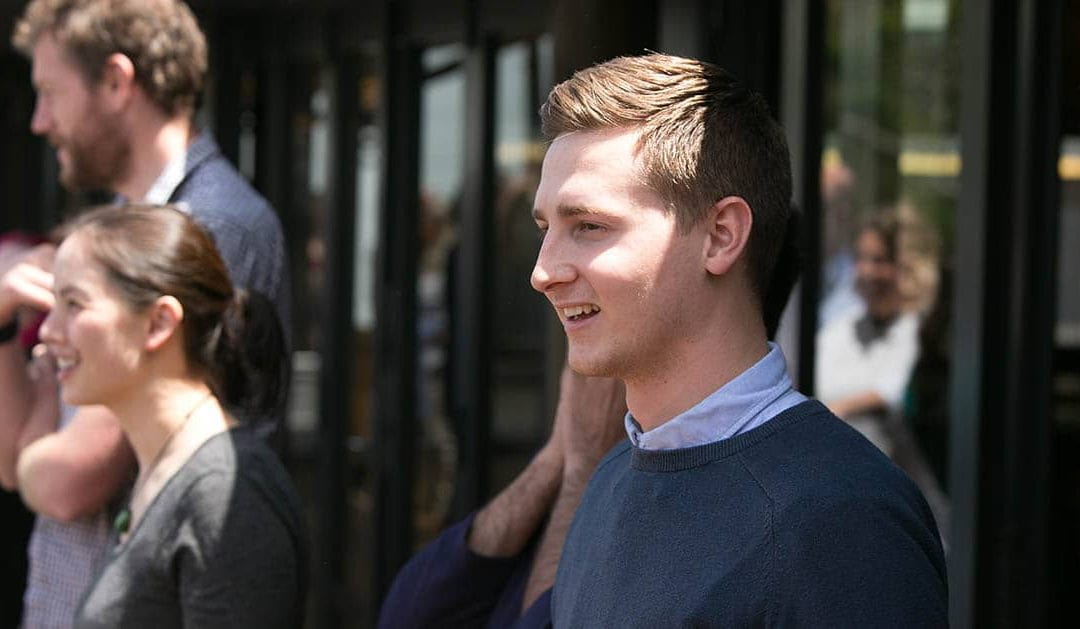
How we can make science education more equitable
8 November 2021
Te Pūnaha Matatini was a natural home for Dr Steven Turnbull to complete his doctoral project on tertiary science participation in Aotearoa New Zealand.
Equity in science participation is central to Te Pūnaha Matatini’s ethos, and so is Dr Steven Turnbull’s distinctly transdisciplinary approach. For his PhD in Education, Steven combined quantitative analysis of large-scale administrative student records with sociological theory and qualitative analysis of interviews to explore why students chose to engage or disengage from science education.
Using these methods, he explored disparities in science education and created a theoretical model showing how we can make the field of science education more equitable.
Steven was supervised by Te Pūnaha Matatini Principal Investigators Dr Dion O’Neale and Dr Kirsten Locke.
“Steven’s thesis was ambitious in scope, application and methodology,” says Kirsten. “The blending of qualitative and quantitative research approaches is not for the faint-hearted and is notoriously difficult to correctly balance. On this point, Steven’s thesis is exemplary.”
Steven completed a Bachelor of Arts in Education and Psychology, before pursuing postgraduate research in Education, culminating in this PhD project. He has been working with Dion since he did a summer scholarship in Physics during his undergraduate study.
Throughout his PhD Steven was involved with Te Pūnaha Matatini Whānau, and is a regular participant in Te Pūnaha Matatini’s Annual Hui.
“Steven’s PhD is a perfect example of the sort of transdisciplinary research that Te Pūnaha Matatini has enabled,” says Dion.
“While Steven’s thesis was a substantive academic piece of work, throughout his research there was a continuing focus on applications and outcomes that could bring about positive change in STEM education at both a systemic level and for individual students.”
In his thesis Steven analysed data obtained from Aotearoa New Zealand’s Integrated Data Infrastructure (IDI) about students studying STEM subjects in Aotearoa New Zealand. He used this data to identify trends in science participation through a novel method of network analysis.
This data was complemented by a survey of science students, followed by in-depth interviews to gain more insight into the human dimension to education engagement.
Steven then interrogated his findings through a theoretical framework based on the sociological work of Pierre Bourdieu.
“Steven is the very first person to ever collect and analyse a decade’s worth of NCEA science data through the Integrated Data Infrastructure (IDI) at Stats NZ,” notes Kirsten.
“The analysis that Steven performed with this enormous data set enabled an evidence-based exploration of exactly what was happening with secondary students in their subject selection and the inequities that occur through students turning away from science credits such as physics that could lead to university education.”
“If Steven had stopped there, the thesis would have been an excellent piece of work. However, the truly innovative and astonishing element is how Steven framed and dealt with this comprehensive and thorough data collection approach in relation to the theoretical work of Pierre Bourdieu.”
Steven is now using the quantitative and qualitative skillsets developed in his thesis to address inequities present in existing sources of individual-level data as a postdoctoral research fellow on Te Pūnaha Matatini’s COVID-19 modelling team.
He says that “being in a place were you can contribute to mitigating COVID-19 risk in New Zealand is quite a powerful thing”.
For Steven and the modelling team, this is values-driven work. “Te Pūnaha Matatini is constantly taking an equity-based approach, putting marginalised groups at the centre of everything we do.”
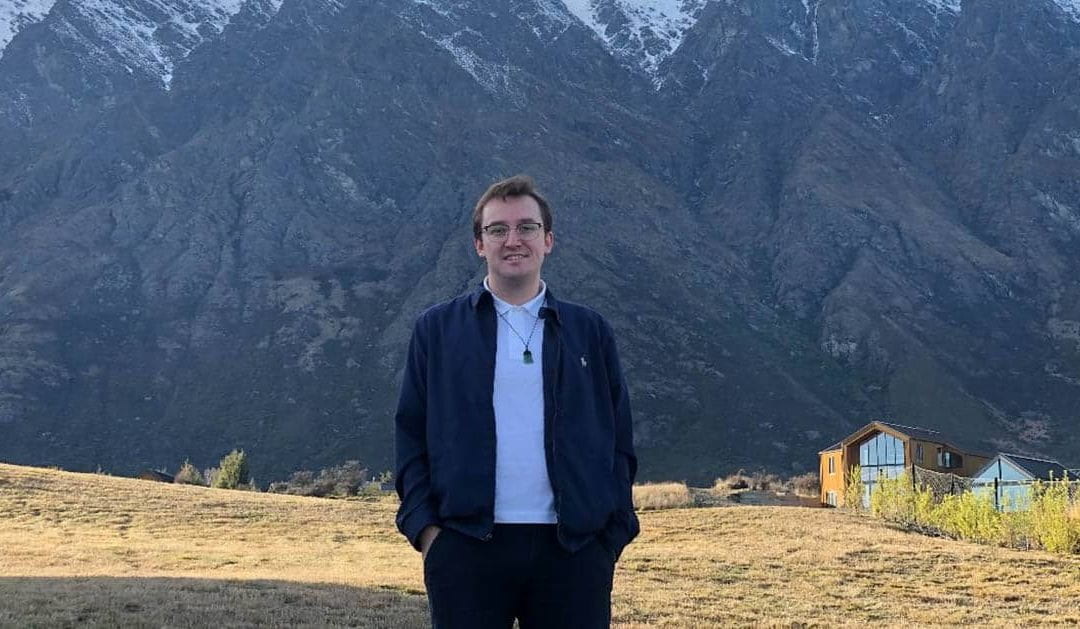
He took foundational physics and is now teaching the course
3 November 2021
Dr Kannan Ridings teaches Tertiary Foundation Certificate and Tuākana students that the best work that they can do will come from collaborative efforts.
Dr Kannan Ridings (Rongowhakaata) struggled at high school – until he discovered science.
“In one of the first tests that we had for science at high school I ended up getting one of the top marks in the class. It just seemed to come naturally to me, and that sparked quite a bit of interest.”
“As I went through high school I became more interested in physics. I remember in one of my classes the teacher said that nothing can go faster than the speed of light, and I thought ‘wow that’s interesting, why is that?’”
“After high school I enrolled in the Tertiary Foundation Certificate and managed to do well enough to get accepted into a Bachelor of Science. I struggled quite a bit at first with studying, but in second and third year physics I hit my stride, and started getting quite good grades.”
When Kannan was taking his third year courses in physics, an inspirational lecturer started at the University of Auckland: Professor Shaun Hendy.
“Shaun was teaching a particularly interesting course about condensed matter physics, and he was one of the best lecturers I’ve had. I was continuously asking questions and being annoying. Shaun went on to become my PhD supervisor in computational materials science.”
“When I first met Shaun was also when Te Pūnaha Matatini was first funded. I remember having some conversations with him about using innovation as a way to improve New Zealand’s economy and move away from reliance on agriculture. Those were some interesting ideas to be exposed to.”
As Kannan was in the final stages of his PhD, Shaun invited him to work on our COVID-19 programme. “One of the things which was great about joining that programme was that it was a team of great scientists, mathematicians and modellers,” says Kannan. “Being in a team-based environment was quite different for me.”
“Working on the COVID-19 programme taught me that a lot of the best science happens when you have not just an individual working on something, but when you get teams of people. The best projects and the best results come from collaboratively working together.”
Kannan is now teaching the same foundational physics course that he took at the University of Auckland all those years ago. He is also a Tuākana mentor, offering academic support to Māori and Pacific students throughout their undergraduate experience.
“Teaching foundational physics has been a rewarding experience. I think that some of the students find it inspiring that somebody who’s done the Tertiary Foundation Certificate before is now teaching them.”
Working in an interdisciplinary environment has exposed Kannan to a range of different methods, techniques and styles of science that he is excited to apply as his career progresses. He teaches his students that acquiring a wide breadth of skills will make them very employable, and shares his insights into what can be achieved through collaboration.
“Throughout my study and time with Te Pūnaha Matatini I’ve seen that you learn the most when you’re working as a team. An individual is not going to solve something like climate change, it’s going to involve more of a collaborative effort.”
“Being exposed to these ideas and approaches at Te Pūnaha Matatini has been one of the biggest influences in what I try to talk to my students about today.”
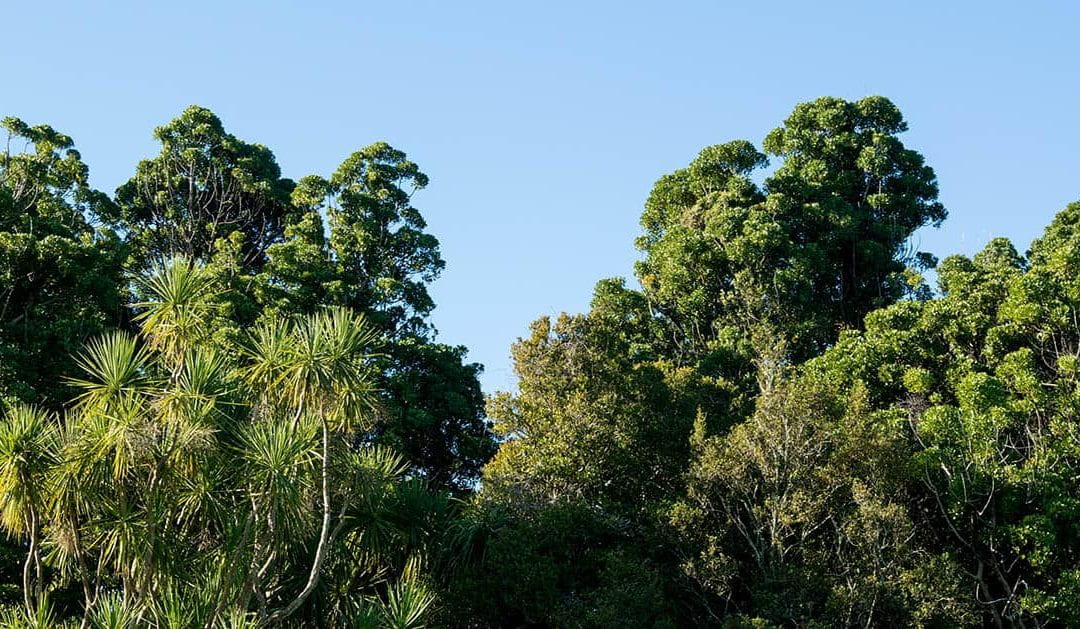
Hīkoi, kōrero and community-led restoration of ngahere in Ōtaki
Haruātai Park in Ōtaki. Photo by Katerina French Armstrong.
2 November 2021
Two masters projects funded by Te Pūnaha Matatini are currently flowing together like a braided river towards creating communications to support community-led environmental restoration in Ōtaki.
Design student Katerina French Armstrong (Tūhoe) and science in society student Vicky Gane have been exploring how to communicate the value of reforestation in Ōtaki in very different ways.
Katerina’s project connects kaupapa Māori and spatial narratives to navigate community-led environmental restoration, while Vicky’s project measures the environmental effects of tree planting along the Ōtaki River.
Friends of the Otaki River have been carrying out replanting and restoration along a section of this river for over two decades. Associate Professor Rhian Salmon often visits this beautiful reforested area with her students, and was recently struck by how little she knows about the effect that planting trees has on the environment.
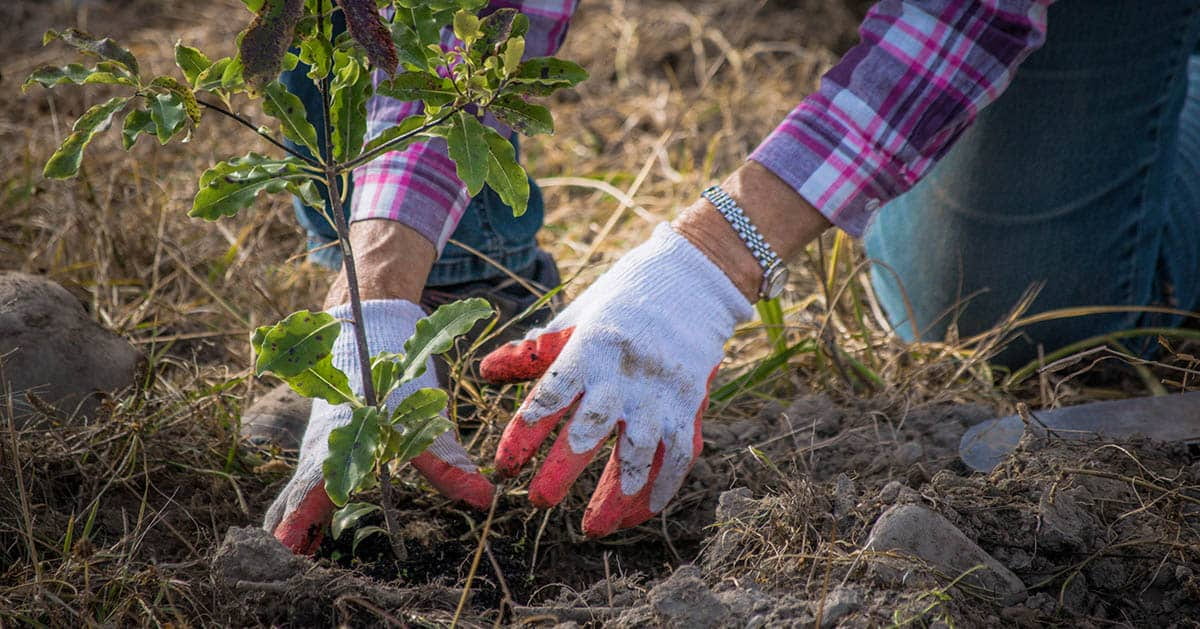
A tree planting at the Ōtaki River. Photo by Katerina French Armstrong.
Rhian had a vision for creating a designed, living, growing science communication project that could tell visitors about how much carbon particular trees were absorbing, and how that relates to their climate impact.
She joined forces with designer Jo Bailey and they decided to approach the project from a transdisciplinary angle, bringing together a design student and a science in society student. They also realised they needed the help of Associate Professor Cate MacIinnis-Ng, to contribute her immense knowledge about trees.
For Te Pūnaha Matatini investigators Rhian, Jo and Cate, this is an exciting exploration into deliberately working transdisciplinarily, bringing together science communication, design, ecology and mātauranga Māori. The overall project also tests institutional boundaries, with Rhian based at Victoria University of Wellington, Jo at Massey University, Cate at the University of Auckland, and funding from Te Pūnaha Matatini.
“The thing that I love is that Kat has taken a big picture approach and looked into what the land used to look like in Ōtaki and how colonisation, politics and human presence have affected it,” says Rhian. “And then Vicky’s looking at the actual trees.”
Katerina currently plans to produce an augmented reality app that shows how key landscapes around Ōtaki looked in the past, and how they could potentially look in the future. Alongside Jo, she has supervision and guidance from artist Associate Professor Huhana Smith (Ngāti Tukorehe, Ngāti Raukawa ki Te Tonga) at Massey University.
“Aotearoa’s colonial history, rapid deforestation and land alteration has significantly changed the face of our whenua, and the relationship between tangata and the ngahere,” says Katerina. “I grew up beside the Tararua Range and saw deforestation happen right outside my window. That’s the point that I could relate to, so I went with that.”
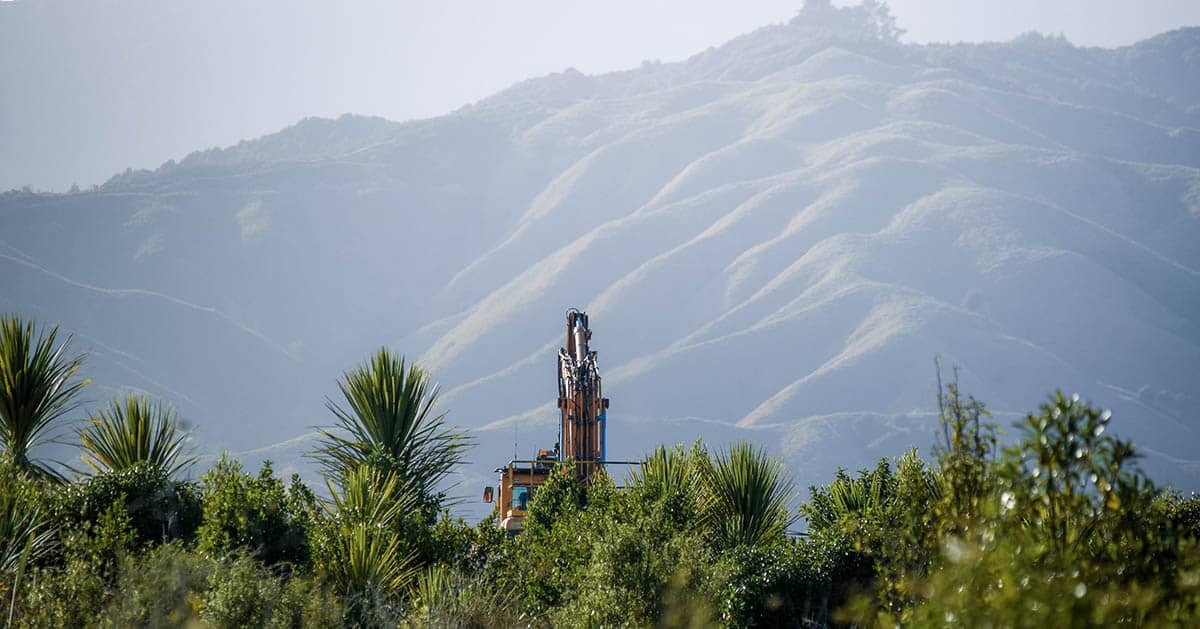
The Tararua Ranges tower above Ōtaki. Photo by Katerina French Armstrong.
Vicky is using allometric equations to calculate the biomass of specific trees, five-minute bird counts and pitfall traps to understand the biodiversity of the area, and analysis of soil to understand its carbon content. She is co-supervised by ecologist Associate Professor Stephen Hartley at Te Herenga Waka Victoria University of Wellington.
“I haven’t done that kind of sampling before,” says Vicky. “I come from a conservation biology background, but my main focus before now has been on fauna rather than flora -and definitely not on soil, so I’m learning a lot of new stuff.”
The outcomes of both projects will be co-designed with the local community, and are intertwined in a way that Katerina and Vicky compare to a braided river.

Designing the projects was a collaborative process. Photo by Katerina French Armstrong.
A central methodology for the two projects is meeting each week in Haruātai Park for a walk and kōrero with Watene Kaihau from local iwi Ngati Raukawa ki te Tonga.
“It’s a co-design process with all the people that we’ve been meeting along the way,” explains Katerina. “This is a new way of working for me, because as a spatial designer I’m used to being handed a brief with set parameters. This project has been really rewarding because it feels a lot more meaningful to the specific site.”
“Our projects connect in interesting ways,” says Vicky. “Because I have been coming along to a lot of meetings with Katerina to talk to the locals about the area, I’m being informed by what the area was like originally, people’s connections to the land, and the history of the area.”
“I’m keeping all that in mind when I’m thinking about the measurements I’m doing. When I come to the next stage of communicating my findings it won’t just be the scientific benefits of the site, it will be how it sits in the wider historical landscape and the community.”
The results of the overall project are likely to ask questions as much as proffer answers, and Jo hopes that they will stimulate conversation.
“The great thing about this project is that it’s taken on a life of its own,” concludes Jo. “We’ve let it fly and it’s flown off and transformed in this really beautiful way.”
